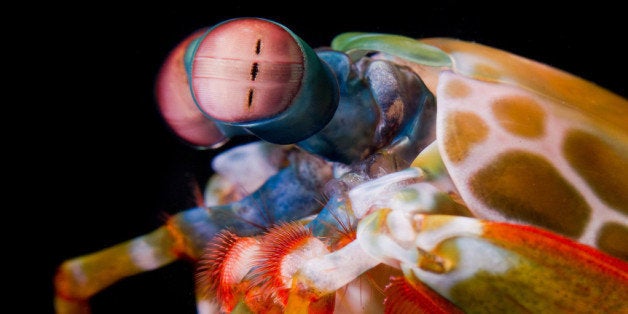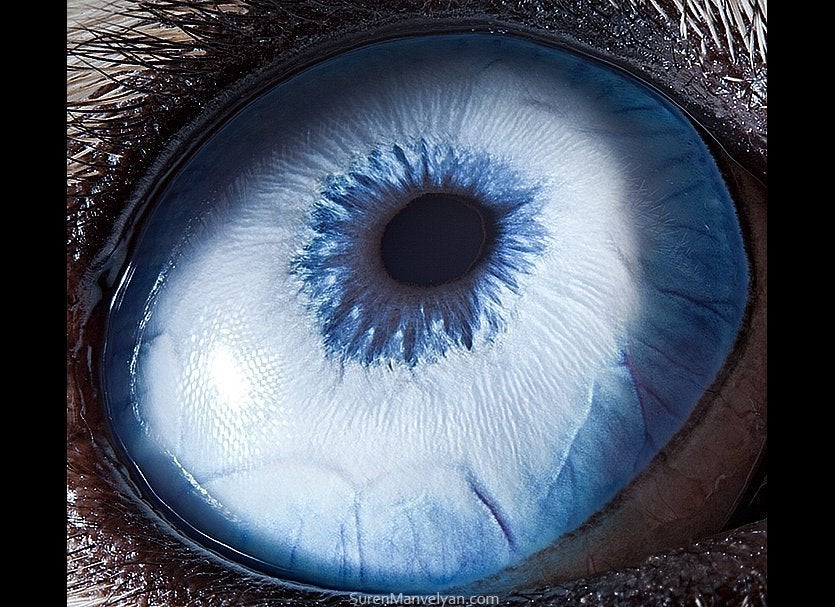
The colorful little guy pictured above puts the eyes of every other animal to shame. Whereas humans receive color information via three color receptors in our eyes, mantis shrimp (Neogonodactylus oerstedii) have 12. Six of these differentiate five discrete wavelengths of ultraviolet light, researchers report online July 3 in Current Biology.
The mantis shrimp’s vision is possible by making use of specially tuned, UV-specific optical filters in its color-detecting cone cells. The optical filters are made of mycosporine-like amino acids (MAAs), a substance commonly found in the skin or exoskeleton of marine organisms.
Often referred to as nature’s sunscreens, MAAs are usually employed to protect an organism from DNA-damaging UV rays; however, the mantis shrimp has incorporated them into powerful spectral tuning filters.
Though the reason for the mantis shrimp’s complex visual perception is poorly understood, one possibility is that the UV detection could help visualize otherwise difficult-to-see prey on coral reefs. Many organisms absorb UV light—these organisms would be easy to spot as black objects in a bright world.
This story has been provided by AAAS, the non-profit sciencesociety, and its international journal, Science.
